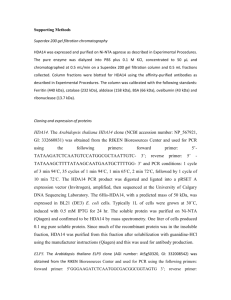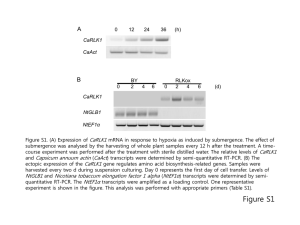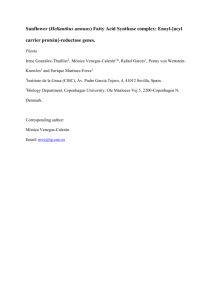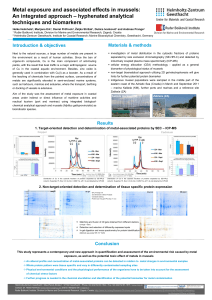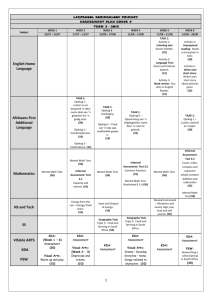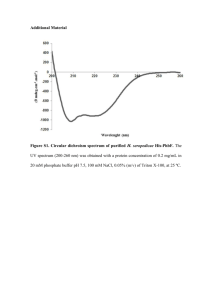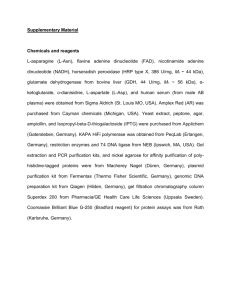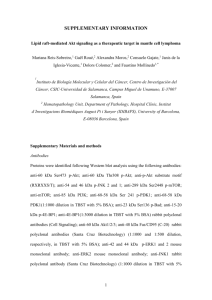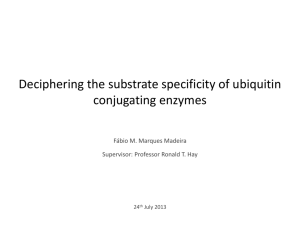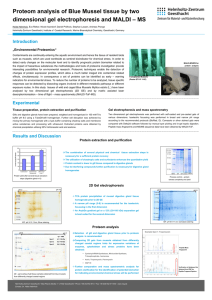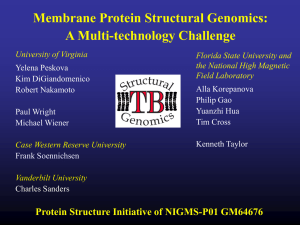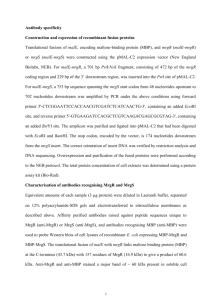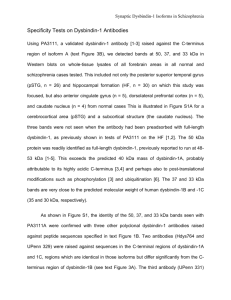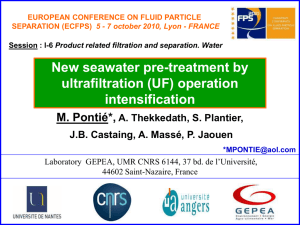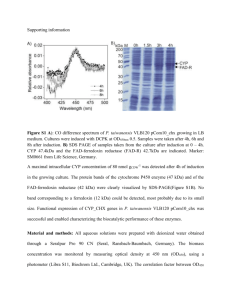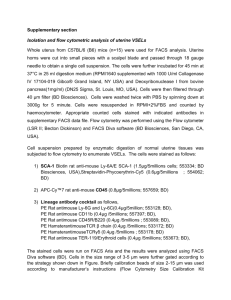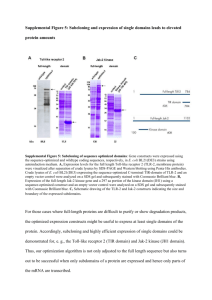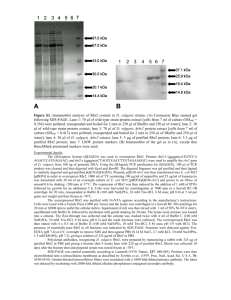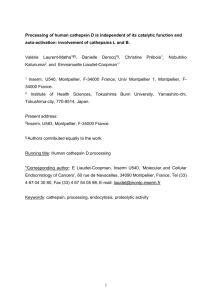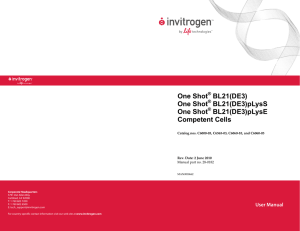Supplement xxx
advertisement
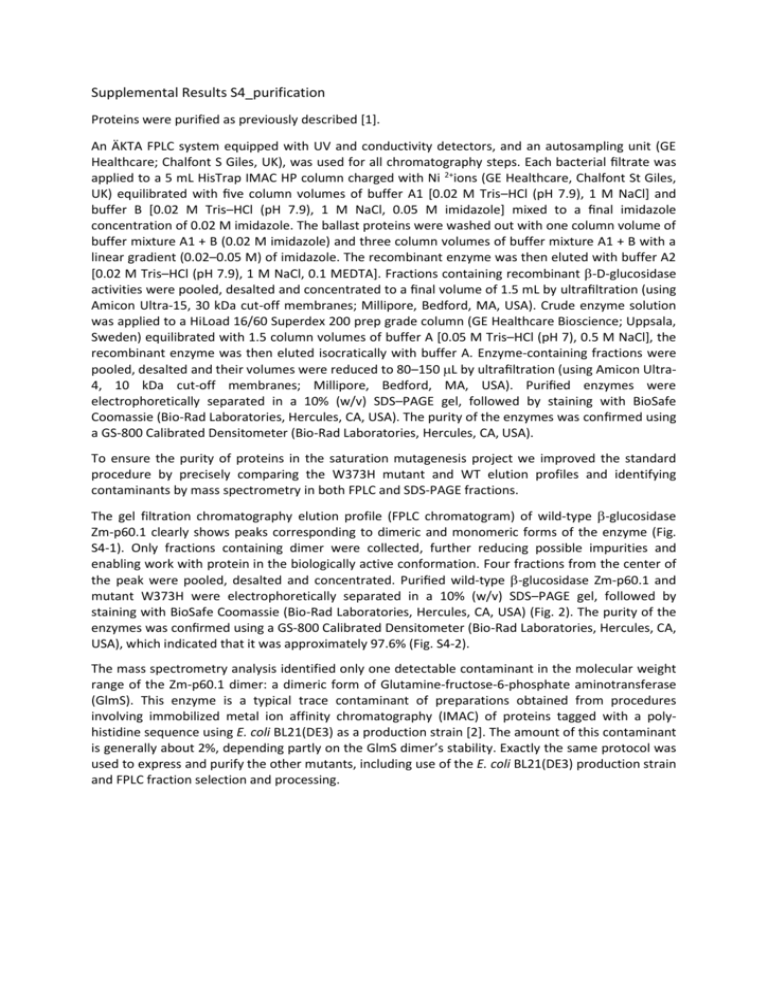
Supplemental Results S4_purification Proteins were purified as previously described [1]. An ÄKTA FPLC system equipped with UV and conductivity detectors, and an autosampling unit (GE Healthcare; Chalfont S Giles, UK), was used for all chromatography steps. Each bacterial filtrate was applied to a 5 mL HisTrap IMAC HP column charged with Ni 2+ions (GE Healthcare, Chalfont St Giles, UK) equilibrated with five column volumes of buffer A1 [0.02 M Tris–HCl (pH 7.9), 1 M NaCl] and buffer B [0.02 M Tris–HCl (pH 7.9), 1 M NaCl, 0.05 M imidazole] mixed to a final imidazole concentration of 0.02 M imidazole. The ballast proteins were washed out with one column volume of buffer mixture A1 + B (0.02 M imidazole) and three column volumes of buffer mixture A1 + B with a linear gradient (0.02–0.05 M) of imidazole. The recombinant enzyme was then eluted with buffer A2 [0.02 M Tris–HCl (pH 7.9), 1 M NaCl, 0.1 MEDTA]. Fractions containing recombinant -D-glucosidase activities were pooled, desalted and concentrated to a final volume of 1.5 mL by ultrafiltration (using Amicon Ultra-15, 30 kDa cut-off membranes; Millipore, Bedford, MA, USA). Crude enzyme solution was applied to a HiLoad 16/60 Superdex 200 prep grade column (GE Healthcare Bioscience; Uppsala, Sweden) equilibrated with 1.5 column volumes of buffer A [0.05 M Tris–HCl (pH 7), 0.5 M NaCl], the recombinant enzyme was then eluted isocratically with buffer A. Enzyme-containing fractions were pooled, desalted and their volumes were reduced to 80–150 L by ultrafiltration (using Amicon Ultra4, 10 kDa cut-off membranes; Millipore, Bedford, MA, USA). Purified enzymes were electrophoretically separated in a 10% (w/v) SDS–PAGE gel, followed by staining with BioSafe Coomassie (Bio-Rad Laboratories, Hercules, CA, USA). The purity of the enzymes was confirmed using a GS-800 Calibrated Densitometer (Bio-Rad Laboratories, Hercules, CA, USA). To ensure the purity of proteins in the saturation mutagenesis project we improved the standard procedure by precisely comparing the W373H mutant and WT elution profiles and identifying contaminants by mass spectrometry in both FPLC and SDS-PAGE fractions. The gel filtration chromatography elution profile (FPLC chromatogram) of wild-type -glucosidase Zm-p60.1 clearly shows peaks corresponding to dimeric and monomeric forms of the enzyme (Fig. S4-1). Only fractions containing dimer were collected, further reducing possible impurities and enabling work with protein in the biologically active conformation. Four fractions from the center of the peak were pooled, desalted and concentrated. Purified wild-type -glucosidase Zm-p60.1 and mutant W373H were electrophoretically separated in a 10% (w/v) SDS–PAGE gel, followed by staining with BioSafe Coomassie (Bio-Rad Laboratories, Hercules, CA, USA) (Fig. 2). The purity of the enzymes was confirmed using a GS-800 Calibrated Densitometer (Bio-Rad Laboratories, Hercules, CA, USA), which indicated that it was approximately 97.6% (Fig. S4-2). The mass spectrometry analysis identified only one detectable contaminant in the molecular weight range of the Zm-p60.1 dimer: a dimeric form of Glutamine-fructose-6-phosphate aminotransferase (GlmS). This enzyme is a typical trace contaminant of preparations obtained from procedures involving immobilized metal ion affinity chromatography (IMAC) of proteins tagged with a polyhistidine sequence using E. coli BL21(DE3) as a production strain [2]. The amount of this contaminant is generally about 2%, depending partly on the GlmS dimer’s stability. Exactly the same protocol was used to express and purify the other mutants, including use of the E. coli BL21(DE3) production strain and FPLC fraction selection and processing. Dimeric form Monomeric form Fig. S4-1 - Gel filtration elution profiles from the Äkta HPLC system for all mutants. Only active dimeric fractions were collected (columns 1D11-1E1) and used in subsequent experiments. Differences in heights of the peaks reflect the variability of protein expression in E. coli BL21(DE3)pLysS. 1 2 3 250 kDa 150 kDa 100 kDa GlmS 75 kDa 50 kDa 37 kDa 25 kDa Fig. S4-2 - Results of 10% SDS PAGE separation of purified enzymes after gel filtration. Minor bands correspond to the contaminant Glutamine-fructose-6-phosphate aminotransferase (GlmS). Line 1 – Mutant W373H. Line 2 – WT -glucosidase Zm-p60.1. Line 3 – SDS marker. 1 µg of total protein was loaded into the well. SUPPLEMENTAL REFERENCES 1. Filipi T, Mazura P, Janda L, Kiran NS, Brzobohatý B (2012) Engineering the cytokinin-glucoside specificity of the maize β-D-glucosidase Zm-p60.1 using site-directed random mutagenesis. Phytochemistry 74: 40–48. 2. Robichon C, Luo J, Causey TB, Benner JS, Samuelson JC (2011) Engineering Escherichia coli BL21(DE3) derivative strains to minimize E. coli protein contamination after purification by immobilized metal affinity chromatography. Appl Environ Microbiol 77: 4634–4646.
